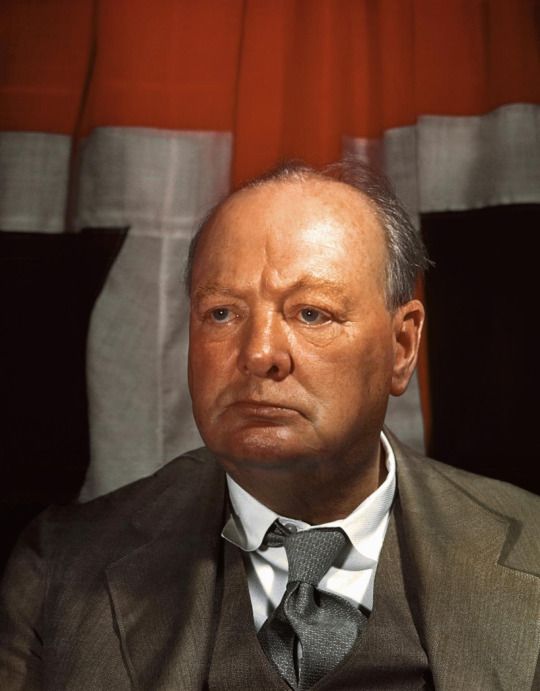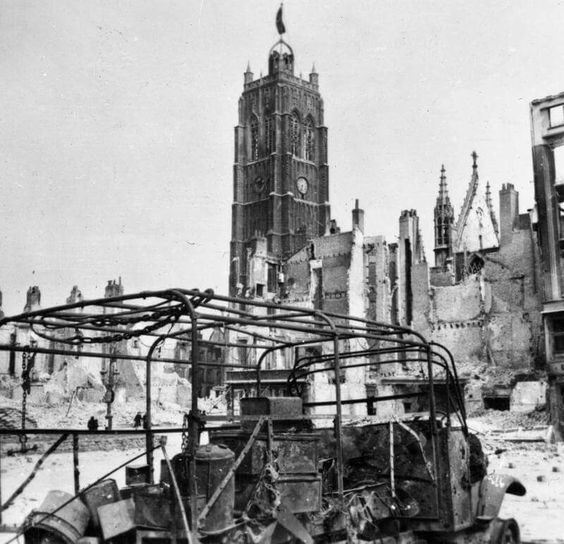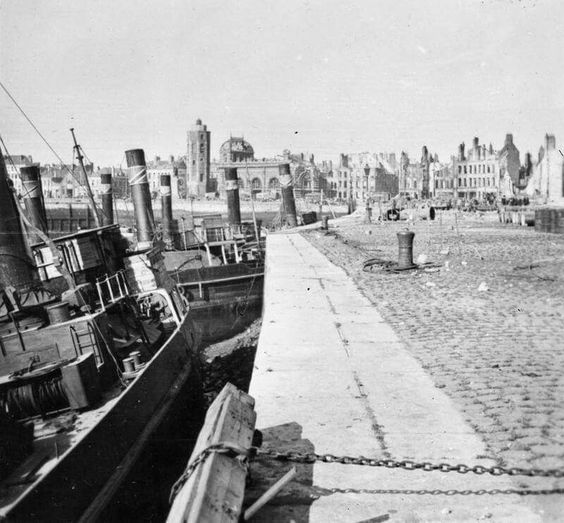Tuesday 4 June 1940
 |
| Winston Churchill. |
The Germans immediately re-deploy their forces for an operation south towards Paris. The new attack will be Operation Fall Rot ("Case Red").
The French try attacking at Abbeville again at 03:00 pursuant to General Georges' plan. Little reconnaissance is performed beforehand, and communication - especially between French and British formations - is inadequate. The French tanks and British infantry attack at different times, and some of the attacking formation arrive only at the last moment.
French tanks of 2nd Armoured Division, part of the 4th Army Group under General Huntziger, advance at Abbeville but run into a minefield in a sector they mistakenly believe still to be held by the 51st Highland Division. Instead, the highlanders have pulled back during the night, and the Germans planted mines in the evacuated territory. The Allies lose at least fifty tanks, numerous other armored vehicles and take 1000 casualties. The Germans retain the high ground northwest of Caubert and the attack is a complete fiasco.
Dunkirk: Operation Dynamo ends at 03:40. The Allied navies have rescued 338,226 men, of which 112,000 are French. The evacuation greatly exceeded expectations of perhaps 50,000 evacuees and thus is considered a great victory. Destroyer HMS Ivanhoe is one of the last ships out and is hit with a bomb on its deck crowded with French soldiers.
Besides the tens of thousands of Allied troops who now are POWs, left behind in Dunkirk are
- 880 field guns,
- 310 guns of large calibre,
- some 500 anti-aircraft guns,
- about 850 anti-tank guns,
- 11,000 machine guns,
- nearly 700 tanks,
- 20,000 motorcycles, and
- 45,000 motor cars and lorries.
Air losses by both sides are a subject of great controversy. The RAF lost 106-135 planes, while losses for the Luftwaffe vary from 100-240.
 |
| Dunkirk after the battle. |
The Luftwaffe bombs the port of Le Havre.
General Weygand asks the British for 20 RAF fighter squadrons, and the request is refused.
Battle of the Atlantic: Kriegsmarine pocket battleships Gneisenau, Scharnhorst, and Admiral Hipper, along with a squadron of destroyers (destroyers Karl Galster, Hans Lody, Erich Steinbrinck & Hermann Schoemann), depart for Norwegian waters under Admiral Wilhelm Marschall.
British Government: Prime Minister Winston Churchill gives a stirring speech in the House of Commons. He states that Operation Dynamo, which brought 350,000 troops back to England, had turned a defeat into a victory:
We shall go on to the end, we shall fight in France, we shall fight on the seas and oceans, we shall fight with growing confidence and growing strength in the air, we shall defend our Island, whatever the cost may be, we shall fight on the beaches, we shall fight on the landing grounds, we shall fight in the fields and in the streets, we shall fight in the hills; we shall never surrender... until, in God's good time, the New World, with all its power and might, steps forth to the rescue and liberation of the Old.The speech, Churchill's most famous, receives a mixed reception. The British love it, and it is considered the height of jingoistic rhetoric. On the other hand, the French find little to cheer about in the idea that England now envisions itself fighting alone despite the fact that its troops are still fighting and dying.
 |
| The Dunkirk docks are now quiet. |
The Norwegians continue attacking General Dietl's mountain troops near the Swedish border.
Ireland: The government sets the size of the army at 40,000 troops.
Italy: The Italian high command sends its submarine fleet to sea.
China: The seesawing Battle of Tsaoyang-Ichang continues. The Chinese 5th War Area counterattacks and recovers Nanchang and Yicheng.
Chiang Kai-shek sends representatives to Macau to discuss peace terms with Japanese representatives. There is no progress.
Soviet Military: General Andrei Eremenko becomes the leader of the Soviet 3rd Mechanized Corps, while Konstantin Rokossovsky takes over the Soviet 5th Cavalry Corps.
French Homefront: The refugee crisis is increasing, and it becomes known as L'Éxode ("The Exodus"). Tens of thousands of French citizens inhabiting northern French cities such as Chartres and Lille are heading south, while southern French cities such as Marseilles and Bordeaux are swelling in size.
June 1, 1940: Devastation at Dunkirk
June 2, 1940: Hitler Visits France
June 3, 1940: Operation Paula
June 4, 1940: We Shall Fight
June 5, 1940: Fall Rot
June 6, 1940: Weygand Line Crumbling
June 7, 1940: British Evacuating Narvik
June 8, 1940: Operation Juno
June 9, 1940: Norway Capitulates
June 10, 1940: Mussolini Throws Down
June 11, 1940: Paris an Open City
June 12, 1940: Rommel at St. Valery
June 13, 1940: France Goes Alone
June 14, 1940: Paris Falls
June 15, 1940: Soviets Scoop Up Lithuania
June 16, 1940: Enter Pétain
June 17, 1940: The Lancastria Sinks
June 18, 1940: A Day of Leaders
June 19, 1940: U-boats Run Wild
June 20, 1940: Pétain Wilts
June 21, 1940: Hitler's Happiest Day
June 22, 1940: France Is Done
June 23, 1940: Hitler in Paris
June 24, 1940: Six Million Jews
June 25, 1940: German Celebrations
June 26, 1940: USSR Being Belligerent
June 27, 1940: Malta in Peril
June 28, 1940: Channel Islands Bombed
June 29, 1940: Gandhi Insists on Independence
June 30, 1940: Channel Islands Occupied
2020
No comments:
Post a Comment